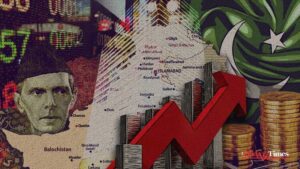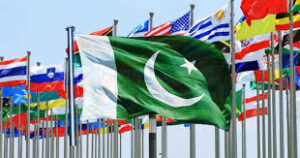What’s Going On in Pakistan
What’s Going On in Pakistan: October 2025
Pakistan is navigating a complex mix of challenges and opportunities at the moment. From diplomatic tensions to domestic unrest, and from economic recovery to public health concerns, the country is at a crossroads. Here’s a look at the major developments shaping Pakistan today.
1. Border Tensions with Afghanistan & Ceasefire

-
Pakistan and Afghanistan have agreed to a temporary 48-hour ceasefire after serious clashes along their border—particularly in areas like Spin Boldak (Kandahar), Chaman, and Kurram. Politico+3Reuters+3The Guardian+3
-
The clashes involved airstrikes, ground attacks, and mortar fire. Pakistan accuses the Afghan Taliban of sheltering militants who attack Pakistani territory; the Taliban deny this and accuse Pakistan of provoking the incidents. Reuters+2The Guardian+2
-
Border crossings have been shut down, disrupting trade and causing hardship for civilians in border areas. Reuters+1

2. Internal Political/Protest Movements
-
The Tehreek-e-Labbaik Pakistan (TLP) has been staging major protests (“Labbaik Ya Aqsa Million March”) since early October, in solidarity with Palestinians amid the ongoing conflict in Gaza. Wikipedia

-
These protests have seen clashes with law enforcement, deaths, arrests, shutdowns of communications (mobile data), and crackdowns in major cities. Wikipedia
-
In Azad Jammu & Kashmir (AJK), there were protests led by the Jammu Kashmir Joint Awami Action Committee (JKJAAC) calling for structural reforms and economic relief. An agreement was reached between protestors and government authorities. Wikipedia
3. Economy: Recovery mixed with challenges

-
Pakistan’s economy is showing signs of recovery. For fiscal year 2024-25, GDP growth is about 2.68%. Industrial growth is picking up; inflation has eased significantly compared to previous years. The Nation+2World Bank+2
-
Remittances have been strong, foreign direct investment has improved, and the stock market has shown positive trends. The Nation+2World Economic Forum+2
-
However, there remain significant obstacles: shortfall in tax collection, energy sector inefficiencies, inflation in essential services (health and education), and external pressures. The Nation+2World Bank+2
4. Public Health & Security

-
Polio vaccination campaigns continue, but with tragic incidents: a police officer was recently killed while protecting polio health workers in Khyber Pakhtunkhwa. AP News
-
These attacks underline longstanding resistance to vaccination efforts in certain areas, often driven by militant opposition or local distrust. AP News
5. International Image and Diplomacy

-
Pakistan has been elected to the United Nations Human Rights Council (HRC) for a three-year term starting Jan 2026, with 178 votes in its favor. This gives Islamabad a platform to raise issues such as Kashmir and Palestine. Arab News PK
-
The border conflict with Afghanistan has drawn international concern. There are calls from other nations and international organizations to maintain restraint and to de-escalate. Reuters+1
6. What’s at Stake & What to Watch
-
Stability vs Escalation: The ceasefire with Afghanistan is fragile. Whether it holds or deteriorates will impact regional security, trade, and the wellbeing of border communities.
-
Protests & Governance: The TLP protests and the Azad Kashmir demands reflect deeper frustration with governance, representation, and economic hardship. How the government responds could influence political stability.
-
Economic Reforms: Recovery is happening, but it remains uneven. Key reforms in revenue mobilization, energy, and public sector enterprises will be critical to sustaining growth and reducing public discontent.
-
Public Health & Safety: Attacks on health service providers, especially in campaigns like polio, continue to pose risks—not only in terms of human cost but also in undermining health goals.
-
International Relations: Pakistan’s international standing (via bodies like the UN) and its diplomatic relations (especially with Afghanistan, India, and donors) will continue to shape its options and leverage.
Conclusion
Pakistan currently stands at an inflection point. On several fronts—economic, political, and diplomatic—there are signs of recovery and positive movement. But there are equal risks: escalating border conflicts, popular unrest, and lingering structural issues. Whether Pakistan can navigate these safely depends largely on balancing reform with responsiveness to public concerns and maintaining peace at its borders.
For more information—>(Future Pulse)